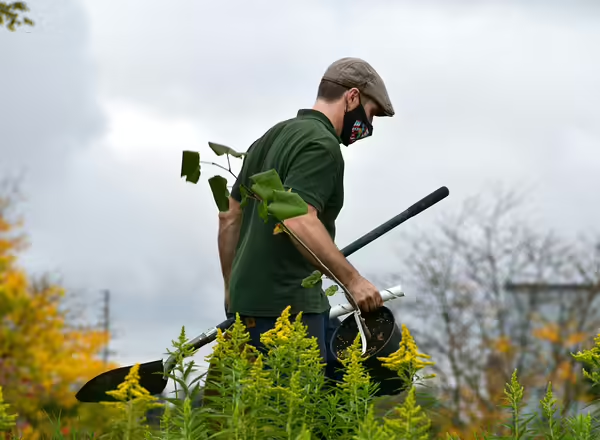
A site that provides full sunlight, good air circulation, and a well drained soil high in organic matter is ideal for growing roses. Roses should receive at least six hours of sun a day. If all-day sun is not available, a location where they get only morning sun is preferred to one where they get only afternoon sun. Morning sun helps to dry the leaves quicker, reducing the potential for disease. Shade in the afternoon is a plus, as it helps to prolong flower quality. Poorly drained soils and "wet feet" spell death for roses. When selecting a site, make sure the drainage is adequate. If drainage is suspect, improve it through soil amendments or by constructing raised beds. If an 18-inch-deep hole filled with water drains in 5-6 hours, drainage is satisfactory.

The roots of roses don’t compete well with those of trees and other shrubs. It is recommended that roses be planted as far away from competing trees and shrubs as possible. Roses are tolerant of most soil types. However, they do better in a relatively fertile soil high in organic matter. A soil pH of 6.0-7.0 is preferred by roses. If possible, prepare planting beds as early as you can to allow the soil to settle. Bed preparation is a good time to address issues of nutrient and pH adjustments. It is absolutely necessary to prepare the bed before planting any plants.
When creating a rose bed, apply about 2" to 4" of organic matter to the area prior to tiling. This will help improve soil tilth and texture. When planting a single rose bush, add soil amendments at the rate of about 1 part amendment to 2 parts of soil per planting hole.
Phosphorous is also beneficial in getting roses well-established. Bonemeal is a good organic source of phosphorous and can be added at the rate of 1 cup per plant, working it thoroughly into the soil in the planting hole. Superphosphate (0-45-0) can also be used at a rate of about one-half pound for every bushel of organic matter used. Be sure to work it in thoroughly.